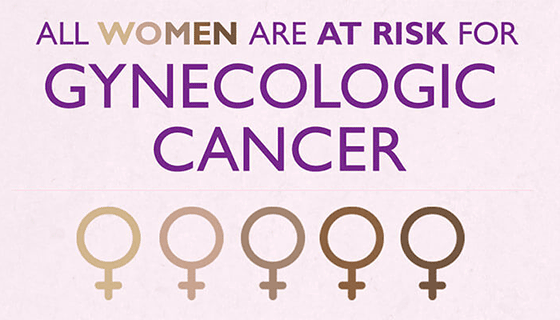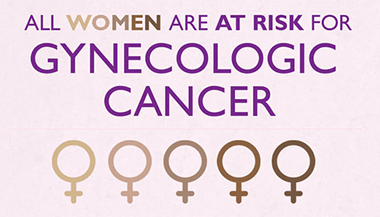Cervical Cancer
Cervical cancer develops when abnormal cells grow in a person’s cervix. The cervix is the lower part of the uterus, a pear-shaped organ where a fetus grows during pregnancy. It connects the uterus to the vagina.
What is cervical cancer?
Cervical cancer begins when healthy cells in the cervix change and become cancerous (malignant). These cells multiply and grow out of control, forming tumors. Cervical cancer can also spread to other nearby organs, such as the uterus and vagina, or to distant parts of the body.
Cervical Cancer Causes
Infection with human papillomavirus (HPV) can cause cervical cancer, and the virus is found in over 99% of cervical cancers. HPV is the most common sexually transmitted infection (STI) in the United States, with about 43 million infections each year.
Cervical Cancer and HPV
There are more than 100 different strains of HPV. HPV16 and HPV18 cause the most cervical cancers in the United States. People are exposed to the HPV virus through sexual activity. For most, the virus clears up on its own. If it doesn’t, cancer may develop years later. There is no way to predict who will develop cervical cancer after exposure.
Things that can put you at higher risk of cancer caused by HPV infections include:
- Becoming sexually active at a younger age
- Having multiple sexual partners
- Having unprotected sex (without condoms)
- Having a weakened immune system as a result of HIV (the virus that causes AIDS), or from medications that suppress the immune system
- Not getting the HPV vaccine
Other Cervical Cancer Risk Factors
Additional risk factors for cervical cancer include:
- Smoking cigarettes: Women who smoke are about twice as likely to develop cervical cancer compared with women who don’t smoke.
- Exposure to diethylstilbestrol (DES) before birth: This medication was prescribed to pregnant women between 1940 and 1971 to prevent miscarriage. Studies later found it was not effective. Daughters exposed to DES in their mother’s womb are at higher risk of developing certain cancers including cervical cancer not related to HPV.
- Long-term use of oral birth control: The risk of cervical cancer increases for women who take oral contraceptives over several years. However, research shows that after several years off of oral contraceptives, your risk level returns to normal.
Creating Vaccines to Kick Cancer’s Butt

The link between HPV and cervical cancer is bigger than the link between smoking and lung cancer. At a recent Tedx Talk in Boston, Cornelia Liu Trimble, M.D., professor in the Johns Hopkins Departments of Gynecology and Obstetrics, Pathology and Oncology, spoke about her work in creating vaccines to treat HPV and effectively prevent cervical cancers.
Cervical Cancer Prevention
An HPV vaccine is the best way to prevent cervical cancer. The vaccine also protects against other cancers caused by HPV, including:
The vaccine is safe and effective and shown to prevent more than 90% of cancers attributed to HPV. Since the vaccine’s introduction in 2006, HPV infections from high-risk strains dropped by 88% in teenagers and 81% in young adult women. The number of women with cervical precancers has also dropped.
Doctors recommend the HPV vaccine for boys and girls between the ages of 9 and 26. The vaccine works best if it is given before any exposure to HPV occurs. It may also be an option for men and women between the ages of 27 and 45 who didn’t get it earlier. Talk to your doctor to find out if you or your child are eligible for the vaccine.
Cervical Cancer Symptoms
Signs of early cervical cancer can be subtle and mimic signs of other cancers or benign conditions. But it’s important to see a doctor if you have symptoms that persist. Signs to look out for include:
- Bleeding between menstrual periods or after menopause
- Changes in menstrual bleeding, especially periods that are longer or heavier than normal
- Frequent or unexplained pain in your pelvis or lower back
- Pain during sex
- Vaginal bleeding after sex, douching or pelvic exams
- Vaginal discharge that is heavier than normal, changes from a normal milky white or slightly yellow color, or has a strong odor
Symptoms of more advanced cervical cancer can include:
- Blood in the urine
- Bone fractures
- Difficulty with urination or bowel movements (constipation)
- Fatigue
- Leg swelling and leg pain
- Severe back pain
- Unexplained weight loss
Cervical Cancer Diagnosis
All women should see a primary care doctor or gynecologist at least once a year for a well-woman check. During those visits, your doctor will do a pelvic exam, which includes checking for signs of cervical cancer. You should begin screening for cervical cancer at age 21.
There are two common tests doctors use to look for signs of cancer, precancerous changes or increased risk of cervical cancer:
- Pap test (Pap smear): During a Pap test, a doctor uses a long swab to scrape a few cells from the inside of your cervix. They send the swab to a lab, where it is checked for abnormal cells.
- HPV test: A doctor takes a small sample of cervical cells and sends it to a lab, where they check for high-risk HPV strains. Doctors can do this test at the same time as a Pap test, or on its own. These tests can only show if you are at higher risk for cervical cancer after exposure to HPV.
- Depending on your age, your doctor may perform a Pap test and an HPV test together, which may be better at detecting cervical precancer in women younger than 25–30 years old. Studies have shown that HPV testing alone may also be as good as Pap+ and HPV testing in women younger than 25.
Your doctor may recommend more tests if a Pap test shows signs of cervical cancer or changes in cervical cells, including:
- Colposcopy: Your doctor uses a special instrument (colposcope) with a light and magnification to examine the cells in your cervix and vagina.
- Biopsy: In a cervical biopsy, the doctor removes a small amount of cervical tissue for examination under a microscope to look for cancer cells. Some cervical biopsy procedures can be done in a doctor’s office, and others require general anesthesia.
- Imaging tests: Your doctor may order an ultrasound, X-ray, CT scan, MRI or PET scan to look for tumors or other signs of cancer.
Cervical Cancer Stages
Staging describes whether and how far cancer has spread in the body. This can help you and your oncologist decide on the best treatment options.
- Stage 1 cervical cancer: Cancer cells are found only in the cervix.
- Stage 2 cervical cancer: Cancer cells have spread to the upper part of the vagina and/or the tissue immediate surrounding the cervix (parametria).
- Stage 3 cervical cancer: Cancer cells are in the lower part of the vagina, the pelvic sidewall or nearby lymph nodes. Tumors may also block the ureters, the tubes that take urine from the kidneys to the bladder.
- Stage 4 cervical cancer: The cancer has spread to the pelvis, bladder or rectum, or it has spread to other organs or distant lymph nodes.
7 Things You Should Always Discuss with Your Gynecologist

When it comes to sexual and reproductive health, it can be hard to know what’s “normal” and what may be a sign of a potential health problem. Even if you feel embarrassed about certain issues, your gynecologist has seen and heard it all and is there to help you, not to pass judgment.
Cervical Cancer Treatment
Treatment for cervical cancer depends on the cancer stage, your age, overall health and tolerance for certain medications or therapies.
Surgery is the most common treatment for cervical cancer, and could include:
- Conization: This surgery removes a cone-shaped section of tissue from the cervix. The surgeon may use a scalpel (cold-knife conization), a laser or an electrical current passed through a thin wire (loop electrosurgical excision procedure).
- Hysterectomy: This surgical procedure removes the uterus and cervix.
- Pelvic lymph node dissection: Lymph nodes are removed from the pelvic area for examination.
- Para-aortic lymphadenectomy: Lymph nodes are removed from around the aorta, the main artery that leads to the heart.
- Sentinel lymph node mapping: This technique causes the lymph nodes closest to the cervix to glow with a fluorescent light. Doctors use this to figure out where cancer cells from the cervix might spread, and they take a biopsy.
Other treatment options for cervical cancer might include:
- Chemotherapy: Drugs that target and kill cancer cells in your body.
- Radiation: A high-energy X-ray beam that destroys cancer cells so they cannot spread. Doctors often use a combination of external and internal radiation. External radiation beams target the pelvic area. Internal radiation places small, hollow tubes filled with radioactive isotopes directly into the tumor to destroy it.
- Immunotherapy: Drugs that boost your body’s natural ability to detect and kill cancer cells.
Cervical Cancer and Pregnancy
Depending on the stage of cancer and treatment, some people may still be able to get pregnant after treatment for cervical cancer. If you are considering pregnancy after cervical cancer diagnosis, talk to your doctor about it to determine the best treatment options.
Some people are diagnosed with cervical cancer during pregnancy. Depending on your stage of cancer and where you are in your pregnancy, your oncologist can help you understand treatment options. Sometimes, treatment can be delayed until after delivery, and sometimes people need treatment such as chemotherapy during pregnancy.
Gynecologic Cancer Surgery at Sibley Memorial Hospital in Washington, D.C.
- Innovative treatments to address even the most advanced cancers.
- More than 600 gynecologic surgeries performed every year.
- Seamless coordination of care with radiation and medical oncologists.







